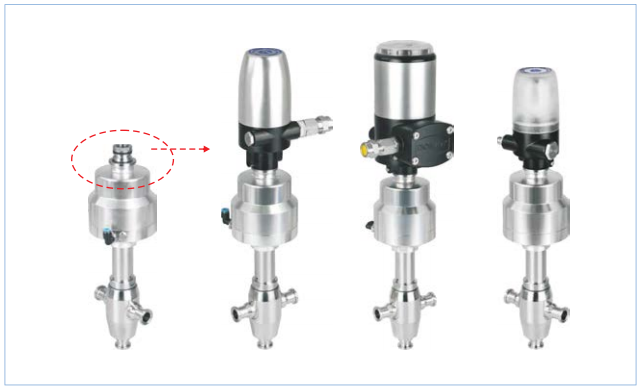In the realm of industrial fluid control systems, the three-way globe control valve plays a pivotal role in ensuring efficient and precise regulation of fluid flow. This specialized valve is designed to handle complex flow configurations, making it an indispensable component in various industries, including HVAC, chemical processing, power generation, and water treatment. In this article, we will explore the function, design, and applications of the three-way globe control valve, highlighting its significance in modern industrial processes.
I.What is a Three-Way Globe Control Valve?
A three-way globe control valve is a type of valve that features three ports: one inlet and two outlets (or vice versa). Its primary function is to regulate the flow of fluids by diverting, mixing, or splitting the flow between two different paths. The valve operates using a globe-style body, which is characterized by a spherical shape and a linear motion mechanism. This design allows for precise control over fluid flow, pressure, and temperature, making it ideal for applications requiring high accuracy.

II.Key Functions of the Three-Way Diverter Valve
The three-way globe control valve serves several critical functions in fluid control systems, including:
1. Flow Diversion
One of the primary functions of the three-way globe control valve is to divert fluid flow between two different paths. This is particularly useful in systems where fluid needs to be redirected based on operational requirements. For example, in HVAC systems, the valve can divert hot or cold water to different zones to maintain optimal temperature control.
2. Flow Mixing
In applications where two different fluid streams need to be combined, the three-way globe control valve can act as a mixing valve. By adjusting the valve's position, operators can control the ratio of the two incoming fluids to achieve the desired mixture. This is commonly used in chemical processing and water treatment plants.
3. Flow Splitting
The valve can also split a single fluid stream into two separate paths. This function is essential in systems where fluid needs to be distributed to multiple processes or locations simultaneously.
4. Pressure and Temperature Regulation
The precise control offered by the three-way globe control valve makes it an excellent tool for regulating pressure and temperature in fluid systems. By adjusting the valve's position, operators can maintain consistent conditions, ensuring optimal performance and safety.
III.Design and Operation
The three-way globe control valve is designed with a robust globe-style body, which provides excellent sealing capabilities and durability. The valve typically consists of the following components:
Valve Body: The main structure that houses the internal components and connects to the piping system.
Valve Plug: A movable component that regulates fluid flow by opening, closing, or partially obstructing the flow path.
Actuator: A device that controls the movement of the valve plug, either manually or automatically (e.g., pneumatic, electric, or hydraulic actuators).
Seat: The surface against which the valve plug seals to prevent leakage.
The valve operates by moving the plug linearly to adjust the flow between the ports. This linear motion allows for precise control, making the three-way globe control valve highly effective in applications requiring fine-tuned adjustments.
IV.Applications of the Three-Way Globe Control Valve
The versatility and reliability of the three-way globe control valve make it suitable for a wide range of applications, including:
1. HVAC Systems
In heating, ventilation, and air conditioning systems, the valve is used to control the flow of hot or cold water to maintain comfortable indoor temperatures. It can also be used to balance flow rates in complex piping networks.
2. Chemical Processing
The valve is widely used in chemical plants to mix or divert corrosive or hazardous fluids safely and efficiently.
3. Power Generation
In power plants, the three-way globe control valve regulates the flow of steam, cooling water, and other fluids to ensure optimal operation of turbines and other equipment.
4. Water Treatment
The valve plays a crucial role in water treatment facilities, where it is used to control the flow of water, chemicals, and wastewater.
V.Advantages of the Three-Way Globe Control Valve
Precision Control: The linear motion mechanism allows for accurate flow regulation.
Versatility: Suitable for a wide range of applications, including mixing, diverting, and splitting flows.
Durability: The robust design ensures long-lasting performance, even in harsh environments.
Energy Efficiency: By optimizing fluid flow, the valve helps reduce energy consumption in industrial processes.
Conclusion
The three-way globe control valve is a vital component in modern fluid control systems, offering unparalleled precision, versatility, and reliability. Its ability to divert, mix, and split flows makes it an essential tool in industries ranging from HVAC to chemical processing. By understanding the function and importance of this valve, engineers and operators can optimize their systems for improved performance and efficiency. Whether you're designing a new system or upgrading an existing one, the three-way globe control valve is a solution worth considering for your fluid control needs.


